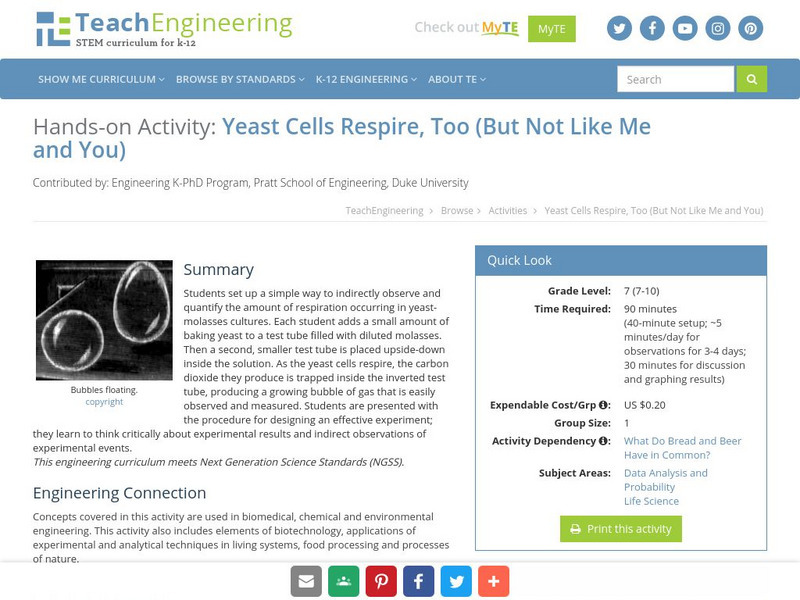Hi, what do you want to do?
TeachEngineering
Teach Engineering: Cellular Respiration and Population Growth
Two lessons and their associated activities explore cellular respiration and population growth in yeasts. Yeast cells are readily obtained and behave predictably, so they are very appropriate to use in middle school classrooms. In the...
TeachEngineering
Teach Engineering: Yeast Cells Respire, Too (But Not Like Me and You)
Students set up a simple way to indirectly observe and quantify the amount of respiration occurring in yeast-molasses cultures. Each student adds a small amount of baking yeast to a test tube filled with diluted molasses. A second,...
TeachEngineering
Teach Engineering: Population Growth in Yeasts
This lesson is the second of two that explore cellular respiration and population growth in yeasts. In the first lesson, students set up a simple way to indirectly observe and quantify the amount of respiration occurring in...
Bryn Mawr College
Serendip: Alcoholic Fermentation in Yeast
A text summary of what students learn in the Alcoholic Fermentation in Yeast lab, along with links to download Student Handouts and Teacher Preparation Notes in PDF or Word formats. Aerobic cellular respiration and alcoholic fermentation...
TeachEngineering
Teach Engineering: How to Make Yeast Cells Thrive
Students set up and run the experiments they designed in the lesson Population Growth in Yeasts, using simple yeast-molasses cultures in test tubes. Population growth is indicated by the amount of respiration occurring in the cultures,...
Better Lesson
Better Lesson: Mitochondria "The Powerhouse of the Cell"
In this lesson and lab activity, students learn about digestion and fermentation, and watch a demonstration of cellular respiration in yeast. Includes numerous real-world connections, e.g., how fermentation is used by humans.
TeachEngineering
Teach Engineering: What Do Bread and Beer Have in Common?
Middle schoolers are presented with information that will allow them to recognize that yeasts are unicellular organisms that are useful to humans. In fact, their usefulness is derived from the contrast between the way yeast cells and...











